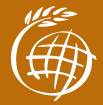Ecosystem services and poverty reduction in aquatic agricultural systems

Written by Patrick Dugan
For Smrity Kona and her family living in southern Bangladesh, the farming year is driven by the annual cycle of monsoon flood and dry season drought. When waters are high family members fish with an assortment of gear in deeply flooded wetlands, they plant a range of vegetables in their homestead garden, and stock carps and sometimes high value freshwater prawn in the homestead pond. When the flood recedes the family traps fish leaving the flooded land and plants winter “boro” rice in the fields where they fished. To complement these crops Smrity and her sisters in law are now also trying to rear poultry and raise goats as a way of increasing income for direct use by the women and children of the household.
The diversity of the Kona household’s farming activities reflects both the importance of the provisioning ecosystem services from the aquatic ecosystems of Bangladesh, and the entrepreneurial skill of farming households in translating this productivity into a diversity of food and income streams. Yet the Konas of Bangladesh and Asia’s other mega deltas remain poor and vulnerable to the vagaries of floods, cyclones, disease and markets, as well as longer term trends in climate, sea level and salinity, often despite substantial improvements in agricultural technologies and crop yields in recent decades.
Understanding why poverty and vulnerability is so persistent in these aquatic systems, and working to change this through improved agriculture research and development, is the focus of the new CGIAR research program (CRP) on aquatic agricultural systems (AAS). Focusing initially on Bangladesh, Cambodia, Philippines, Solomons and Zambia, the program aims to make a difference for the poor and vulnerable who live in these systems by working to harness the best of existing and emerging agricultural technologies, while developing innovative approaches to developing and applying improved agriculture practices. Central to this innovation is the program’s research in development approach where the issues for research are identified, pursued and monitored with and through the participating households.
The Program will pursue six main themes:
Sustainable increases in system productivity. While most AAS are highly productive, the Konas and most other households who use them continue to experience productivity gaps. These could be narrowed with better inputs and innovative production and postharvest practices. Existing and newly developed enhancements may be superior crops, livestock, trees or fish; integrated management to improve quality, yield or production efficiency; the timely provision of production inputs; or reduced postharvest losses.
Equitable access to markets. Many households living in AAS do not pursue opportunities to increase crop, livestock and fish production because of barriers to markets. The Program will work to understand these barriers in the focal hubs and identify investments that can overcome them. In pursuing this work the Program will, wherever possible, focus on the nutritional quality of the products and how value chains can best deliver positive nutritional outcomes, particularly for women, children and other vulnerable groups.
Socio-ecological resilience and adaptive capacity. AAS dependent people are vulnerable to natural disasters exacerbated by climate change, and many suffer oppression and discrimination. Insecurity borne of vulnerability and marginalization dampens innovation and the responsible stewardship of resources for the long term. By working to understand how strengthened rights can foster more equitable access to resources and services and enhance capacity to adapt to irreducible risks, the Program will work with partners to build resilience.
Gender equity. Recognizing that gender disparities hamper communities’ ability to harness the benefits of AAS, the program is pursuing a dual strategy of mainstreaming gender in all research themes and focusing on research toward fundamentally transforming underlying gender norms and roles. In this way the program is supporting efforts to strengthen women’s roles and status in the home and beyond, and improve women’s equity of access to productive resources, such as land, water, technology, financing and services.
Policies and institutions to empower AAS users. Improved technologies in the field rarely offer long-term benefits without supporting institutions and favorable policies. The Program will examine how institutions and policies affect AAS and their users, encourage the emergence and implementation of policies and institutional innovations that facilitate resilience in AAS and their communities, and support AAS communities’ adaptation to unfavorable policies that cannot be changed.
Knowledge sharing, learning and innovation. This theme supports delivery of outcomes by catalyzing knowledge sharing and learning in partners and stakeholders. It advances the Program strategy for scaling up through network development, knowledge dissemination, capacity building and advocacy. Program monitoring and evaluation and impact assessment strengthen the performance of program participants toward achieving greater outcomes and expanding the benefits to the poor in AAS.
Pursuing this research across five focal countries is a major challenge, and one that the CGIAR can only hope to meet if we work effectively with a wide range of partners at multiple levels. To this end national and international agricultural research partners, NGOs and other development actors have all played a key role in designing the program and will be central to its successful implementation. For example in Bangladesh the Bangladesh Agriculture Research Council facilitated national discussion of program design and will continue to provide a forum for program oversight as its rolls out there. Similarly international development NGOs have a place in the Program Leadership Team and the international development agencies in the Program Oversight Panel. While these steps by themselves do not guarantee the program will succeed in its ambition to improve the CGIAR’s engagement in AAS, and the lives of the people who depend upon them, they provide an essential platform from which to pursue this goal.
Photo: ©FAO/Jim Holmes

